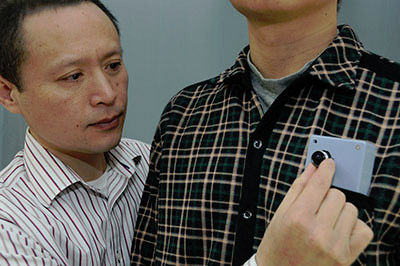 The promise behind wearables extends far behind the convenience of bringing our latest notifications to our attention quickly or keeping track of our physical activities. They could also transform how people deal with a range of challenges brought on by various impairments. A recently featured Braille Smart Gear concept has already given a glimpse into how visually impaired could use a smartwatch. Today we feature a wearable collision warning device that could help those who have lost some of their peripheral vision avoid falls and collisions.
The promise behind wearables extends far behind the convenience of bringing our latest notifications to our attention quickly or keeping track of our physical activities. They could also transform how people deal with a range of challenges brought on by various impairments. A recently featured Braille Smart Gear concept has already given a glimpse into how visually impaired could use a smartwatch. Today we feature a wearable collision warning device that could help those who have lost some of their peripheral vision avoid falls and collisions.
Developed by Massachusetts Eye and Ear, Schepens Eye Research Institute, the pocket-sized device will remind you of a compact digital camera. Worn at chest level, the information provided by the video camera is used to warn you of impending collisions. It continuously monitors your surroundings and warns you when it predicts that a collision is imminent. Rather than relying on distance, its warning system will give you a sense of the time to collision. The more strident the warning, the sooner it will happen.
“We developed this pocket-sized collision warning device, which can predict impending collisions based on time to collision rather than proximity. It gives warnings only when the users approach to obstacles, not when users stand close to objects and not when moving objects just pass by. So, the auditory collision warnings given by the device are simple and intuitively understandable,” explained senior author Gang Luo, Ph.D., Associate Scientist at Mass. Eye and Ear/Schepens, and Assistant Professor of Ophthalmology at Harvard Medical School.
A recent test with 25 patients with tunnel vision or hemianopia found that the wearable collision warning device cut collisions down by 37% with walking speed barely affected. No patient wearing the device had more collisions than when they were not wearing it.
The wearable collision warning device is now headed to a clinical trial study where the device will be evaluated in patients’ daily lives.
Source : Massachusetts Eye and Ear, Schepens Eye Research Institute
